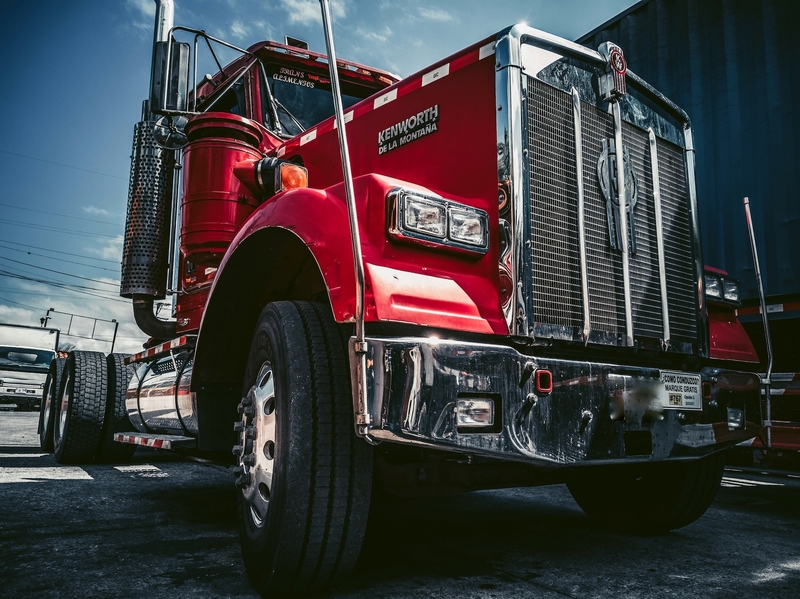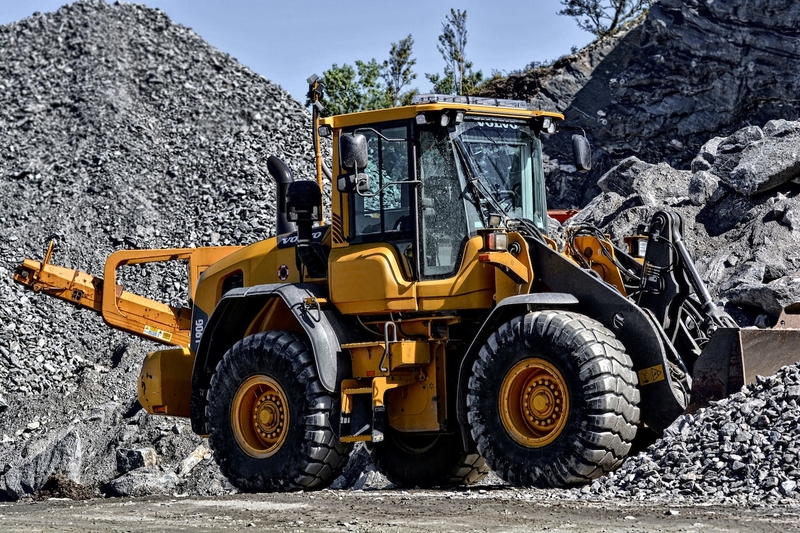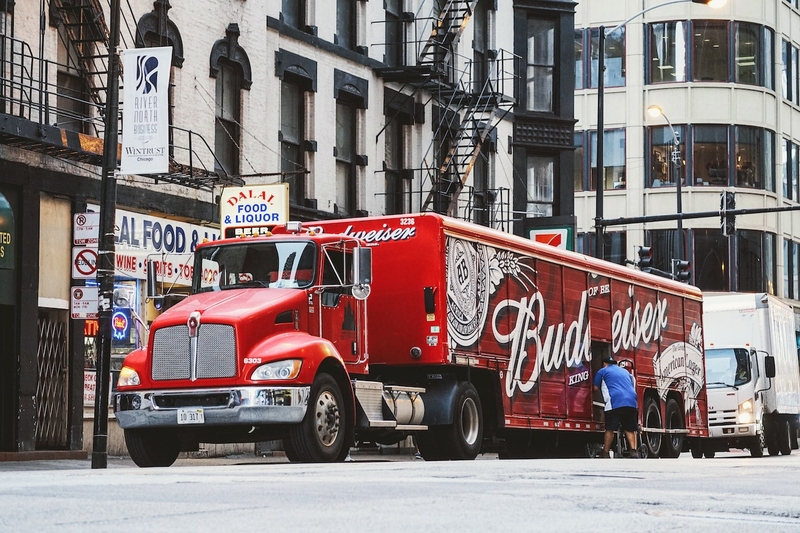The Ins and Outs of Commercial Driver's License: Requirements, Training, and Job Opportunities
"Driving a commercial vehicle is not just a job, it's a career. And a commercial driver's license is your ticket to that career." - Unknown
Brief Insight
A commercial driver's license (CDL) is a specialized driver's license required for drivers who operate commercial vehicles such as trucks and buses. Obtaining a CDL involves passing knowledge and skills tests to demonstrate the ability to safely operate these larger vehicles.

PHOTO: https://unsplash.com/@juanezl
The Importance of Obtaining a Commercial Driver's License (CDL)
A commercial driver's license (CDL) is a special license that authorizes an individual to operate a commercial motor vehicle (CMV) such as a truck, bus, or tractor-trailer. The Federal Motor Carrier Safety Administration (FMCSA) regulates CDLs and sets the standards for the licensing process. The licensing requirements for CDL are more stringent than those for a regular driver's license due to the increased size, weight, and complexity of the CMVs. To obtain a CDL, an individual must meet specific requirements, pass written and practical exams, and demonstrate their ability to safely operate a CMV. Once an individual obtains a CDL, they are subject to ongoing requirements for medical certification, safety training, and compliance with federal and state regulations.
What are the classes of CDL?
There are three different classes of Commercial Driver's License (CDL), each allowing the holder to drive different types of commercial motor vehicles (CMV) and requiring different endorsements.
- Class A CDL: Allows the holder to drive a combination of vehicles with a total weight of 26,001 pounds or more, provided the vehicle being towed weighs more than 10,000 pounds. This class is required for drivers of tractor-trailers, semi-trucks, and other large vehicles that require the driver to have a higher level of skill and knowledge.
- Class B CDL: Allows the holder to drive a single vehicle with a weight of 26,001 pounds or more, or any such vehicle towing a trailer that weighs less than 10,000 pounds. This class is required for drivers of large buses, delivery trucks, and other heavy vehicles that do not require the driver to operate a combination of vehicles.
- Class C CDL: Allows the holder to drive a single vehicle that is not covered by Class A or Class B CDL requirements, such as a passenger van or a hazardous materials (HAZMAT) transport vehicle. This class is required for drivers of smaller commercial vehicles that do not meet the requirements of Class A or Class B CDL.
In addition to these classes, CDL holders may also need to obtain specific endorsements to operate certain types of CMVs. For example, the HAZMAT endorsement is required for drivers who transport hazardous materials, while the Passenger endorsement is required for drivers of buses and other passenger vehicles.
Interesting Facts
The Federal Motor Carrier Safety Administration (FMCSA) estimates that there are over 5 million commercial driver's license holders in the United States.
What is HAZMAT endorsement?
HAZMAT endorsement is an endorsement that is added to a Commercial Driver's License (CDL) that allows a driver to transport hazardous materials (HAZMAT) as defined by the U.S. Department of Transportation. To obtain a HAZMAT endorsement, a driver must undergo a background check by the Transportation Security Administration (TSA) and pass a written test that covers HAZMAT regulations and procedures.
In addition to passing the written test and background check, a driver must also provide fingerprints and complete a TSA security threat assessment. The endorsement is valid for five years, after which the driver must complete a new background check and retake the written test to renew their endorsement.
Drivers with a HAZMAT endorsement must adhere to strict regulations governing the transportation of hazardous materials, including proper labeling, handling, and documentation. The regulations also require specific training for drivers to handle HAZMAT properly and to respond in the event of an emergency.
HAZMAT drivers may transport a wide range of materials, including flammable or combustible liquids, gases, and solids, as well as toxic or infectious substances. Because of the risks associated with transporting hazardous materials, drivers with a HAZMAT endorsement typically receive higher pay and are in high demand in industries such as chemical manufacturing, oil and gas, and transportation of medical and pharmaceutical materials.

PHOTO: https://www.pexels.com/uk-ua/@pixabay/
The Evolution of CDL: A Historical Overview
Commercial driver's licenses (CDLs) were first introduced in the United States in 1986 as part of the Commercial Motor Vehicle Safety Act (CMVSA). Prior to the CMVSA, each state had its own set of regulations and testing requirements for commercial drivers, leading to inconsistencies in standards and safety. The CMVSA established minimum federal requirements for commercial drivers, including the creation of a national database of commercial driver records and the establishment of uniform testing and licensing standards. The law was passed in response to concerns about the safety of commercial drivers and the vehicles they operate on public roads. Since then, the CMVSA has been amended several times to address changing safety concerns and technological advancements in the industry.
The Commercial Motor Vehicle Safety Act of 1986, signed into law by President Ronald Reagan, established the commercial driver's license program in the United States. The Act was a response to the growing number of commercial motor vehicle accidents, and it sought to improve highway safety by ensuring that only qualified drivers were operating commercial vehicles. The program is overseen by the Federal Motor Carrier Safety Administration (FMCSA), which sets the standards for licensing, testing, and training of commercial drivers. The program also requires states to comply with certain regulations, including minimum age requirements, medical certification, and background checks. Since its implementation, the commercial driver's license program has helped to reduce the number of accidents involving commercial motor vehicles, making the highways safer for all motorists.
Interesting Fact
The Commercial Driver's License program was created as part of the Commercial Motor Vehicle Safety Act of 1986, which aimed to improve highway safety by ensuring that commercial drivers were properly trained and licensed.
Who is Eligible to Obtain a CDL
In the United States, a person who wants to obtain a commercial driver's license (CDL) must meet certain requirements. Generally, the minimum age to apply for a CDL is 18, but for certain types of commercial driving, such as interstate driving or transporting hazardous materials, the minimum age is 21. Applicants must also have a valid driver's license and a clean driving record, meaning they have not been convicted of certain offenses, such as driving under the influence of drugs or alcohol.
In addition to meeting age and driving record requirements, CDL applicants must also pass a written knowledge test and a skills test. The written test covers topics such as vehicle inspection, driving safely, and transporting cargo, while the skills test assesses the applicant's ability to operate a commercial vehicle. Applicants may also be required to undergo a medical examination to ensure they are physically fit to operate a commercial vehicle.
Individuals who are interested in obtaining a CDL may also need to complete additional training, such as a commercial driving school program, to prepare for the knowledge and skills tests. Some employers may also require their employees to complete additional training before operating a commercial vehicle.
Overall, obtaining a commercial driver's license requires meeting certain age and driving record requirements, passing written and skills tests, and potentially completing additional training.

PHOTO: https://www.pexels.com/uk-ua/@mvdheuvel/
Where to Obtain a CDL: Locations and Requirements
A person can obtain a commercial driver's license (CDL) at their state's Department of Motor Vehicles (DMV) or licensing agency. The process typically involves several steps, including submitting required documentation, passing a written knowledge test, completing a skills test, and passing a medical exam. In some cases, additional endorsements may be required for certain types of commercial vehicles, such as hazardous materials (HazMat) or passenger transport. Some states may also require the completion of a commercial driver training program before issuing a CDL. It is important to note that the requirements and process for obtaining a CDL may vary by state, so it is recommended to check with the local DMV or licensing agency for specific information.
Education and Training Courses for Obtaining a Commercial Driver's License
In order to obtain a commercial driver's license (CDL), individuals are required to undergo training and complete specific educational courses. The type of training and courses required will depend on the class of CDL and the endorsements desired. Here are some of the educational courses that may be required for getting a CDL:
- CDL Training Programs: These programs are typically offered by truck driving schools and community colleges. They may include classroom instruction as well as hands-on training with a commercial vehicle. The program will cover topics such as vehicle inspection, basic driving skills, and safety regulations.
- Hazardous Materials Endorsement Course: This course is required for individuals who will be transporting hazardous materials. It covers topics such as identifying hazardous materials, safety procedures, and emergency response.
- Passenger Endorsement Course: This course is required for individuals who will be transporting passengers, such as bus drivers. It covers topics such as passenger safety, handling emergencies, and vehicle inspection.
- Air Brake Certification Course: This course is required for individuals who will be driving vehicles with air brakes. It covers topics such as how air brakes work, how to inspect and maintain them, and how to safely operate vehicles with air brakes.
- Combination Vehicle Certification Course: This course is required for individuals who will be driving combination vehicles, such as tractor-trailers. It covers topics such as driving techniques, backing up, and maneuvering in tight spaces.
It's important to note that the requirements for CDL training and educational courses can vary by state, so it's best to check with your local Department of Motor Vehicles (DMV) for specific requirements. Additionally, some employers may offer on-the-job training and additional courses specific to their company and industry.
Interesting Fact
In some states, you can obtain a Commercial Driver's License at the age of 18, but there are restrictions on the types of vehicles you can drive and the distances you can travel.
The Essential Knowledge Needed to Obtain a CDL
To obtain a Commercial Driver's License (CDL), a person needs to have knowledge in various fields. Some of the essential areas of knowledge include:
- General Knowledge: This field of knowledge covers the basics of driving commercial vehicles, including safe driving practices, vehicle inspection, and driving techniques.
- Air Brakes: This field of knowledge covers the components and functions of air brakes, including brake system components, brake adjustment, and proper braking techniques.
- Combination Vehicles: This field of knowledge covers the safe operation of combination vehicles, including the proper methods of coupling and uncoupling, driving techniques, and visual scanning.
- Hazardous Materials: This field of knowledge covers the proper handling and transportation of hazardous materials, including safety procedures, placards and labels, and emergency response.
- Tank Vehicles: This field of knowledge covers the safe operation of tank vehicles, including cargo loading and unloading, handling techniques, and safety procedures.
- Doubles/Triples: This field of knowledge covers the safe operation of double and triple trailers, including coupling and uncoupling, driving techniques, and safety procedures.
- Passenger Vehicles: This field of knowledge covers the safe operation of passenger vehicles, including loading and unloading procedures, passenger safety, and emergency response.
- School Buses: This field of knowledge covers the safe operation of school buses, including passenger safety, loading and unloading procedures, and emergency response.
- Pre-Trip Inspection: This field of knowledge covers the proper inspection of commercial vehicles before and after trips, including identifying potential issues with the vehicle.
To obtain a CDL, a person must pass a written knowledge test in the required fields and a skills test demonstrating their ability to operate the specific type of commercial vehicle. It is essential to have a solid understanding of the required fields of knowledge to pass the tests and obtain a CDL.

PHOTO: https://www.pexels.com/uk-ua/@quintingellar/
The Timeline of Obtaining a CDL
The amount of time it takes to get a commercial driver's license (CDL) can vary depending on a few factors, such as the individual's experience and the state's requirements. Generally, it can take anywhere from a few weeks to a few months to complete the process. The steps include:
- Meeting eligibility requirements: The first step is to make sure you meet the eligibility requirements set by your state. This may include being a certain age (usually 18 or 21), having a valid driver's license, and passing a medical exam.
- Studying for and passing the written exam: The CDL written exam covers general knowledge, combination vehicles, and air brakes. Some states may also require additional endorsements for certain types of vehicles, such as hazmat or passenger vehicles.
- Obtaining a learner's permit: After passing the written exam, you may need to obtain a CDL learner's permit. This allows you to practice driving a commercial vehicle with a licensed CDL holder in the vehicle.
- Completing training: Depending on the state, you may be required to complete a certain amount of training before taking the skills test. This can include classroom instruction and behind-the-wheel training.
- Passing the skills test: The skills test includes a pre-trip inspection, basic control skills, and a road test. You will need to demonstrate your ability to safely operate a commercial vehicle.
Overall, the time it takes to get a CDL can range from a few weeks to a few months, depending on the individual's schedule and the state's requirements. It is important to allow enough time to study, practice, and complete the necessary training before taking the skills test.
Interesting Fact
Commercial drivers are subject to more stringent regulations than non-commercial drivers, including hours-of-service regulations that limit the number of hours a driver can spend on the road each day and each week.
The Challenges of Obtaining a CDL: What You Need to Know
Getting a Commercial Driver's License (CDL) can be a challenging process, but there are ways to overcome common obstacles.
- Meeting the eligibility requirements: One of the biggest challenges is meeting the eligibility requirements, such as having a clean driving record, passing a medical examination, and being at least 21 years old. To overcome this challenge, it's important to plan ahead and make sure you meet all the requirements before beginning the application process.
- Passing the knowledge and skills tests: Another challenge is passing the knowledge and skills tests required for a CDL. To overcome this, it's important to study the CDL manual thoroughly and consider taking a CDL training course to improve your chances of passing the tests.
- Finding a reputable training program: Not all CDL training programs are created equal, so it's important to do your research and find a reputable program that will provide the training you need to pass the CDL tests. Look for programs that have a good reputation and experienced instructors.
- Cost of CDL training: CDL training can be expensive, so it's important to plan ahead and budget accordingly. Look for programs that offer financial aid or tuition reimbursement options.
- Finding employment: After obtaining a CDL, finding employment as a truck driver can be challenging, especially for those with no experience. Consider starting with a company that offers training and a clear career path, and be willing to start with an entry-level position and work your way up.
Overall, the key to overcoming these challenges is to plan ahead, do your research, and be persistent in pursuing your goal of obtaining a CDL. With dedication and hard work, anyone can become a qualified commercial truck driver.

PHOTO: https://www.pexels.com/uk-ua/@einfoto/
Applying for a CDL: Step-by-Step Guide
To apply for a Commercial Driver's License (CDL), follow these steps:
- Check eligibility: Make sure you meet the eligibility criteria for obtaining a CDL. You must be at least 18 years old to obtain an intrastate CDL and 21 years old to obtain an interstate CDL.
- Obtain a CDL manual: Get a copy of the CDL manual from the Department of Motor Vehicles (DMV) in your state or from their website.
- Complete a CDL application: Fill out a CDL application form from your state's DMV.
- Obtain a medical certificate: Get a medical certificate from a certified medical examiner. This certificate verifies that you meet the physical requirements for operating a commercial motor vehicle.
- Gather required documents: Collect all the necessary documents for your CDL application, including your driver's license, social security card, and proof of residency.
- Take a knowledge test: Pass a knowledge test that covers general driving rules and regulations, as well as specific information about commercial motor vehicles.
- Obtain a learner's permit: After passing the knowledge test, obtain a learner's permit that allows you to practice driving with a CDL holder in the vehicle.
- Practice driving: Practice driving with a CDL holder until you feel confident and ready to take the driving skills test.
- Take a driving skills test: Pass the driving skills test that assesses your ability to operate a commercial motor vehicle safely.
- Pay fees: Pay the required fees to obtain your CDL.
It's important to note that the specific requirements and application process may vary slightly between states, so be sure to check with your state's DMV for the most accurate and up-to-date information.
- A Commercial Driver's License (CDL) is required to operate certain types of vehicles for commercial purposes.
- The requirements for obtaining a CDL vary by state but generally include passing a written knowledge test, a skills test, and a medical examination.
- The CDL application process typically involves submitting documentation, such as proof of identity and residency, and paying applicable fees.
- CDL holders must adhere to strict regulations regarding hours of service, vehicle maintenance, and other safety measures.
- Keeping a clean driving record and staying up-to-date on training and certification requirements can help ensure successful and safe driving as a CDL holder.
FAQ
What vehicles require a CDL?
Vehicles that require a CDL include tractor-trailers, buses, and any vehicle with a Gross Vehicle Weight Rating (GVWR) of 26,001 pounds or more, or those carrying hazardous materials.
What is the CDL written test?
The CDL written test consists of several sections, including general knowledge, air brakes, combination vehicles, doubles/triples, tanker vehicles, and hazardous materials.
What is the CDL skills test?
The CDL skills test includes a pre-trip inspection, basic vehicle control, and on-road driving.
How long does it take to get a CDL?
The time it takes to get a CDL varies depending on the state and the individual's schedule. On average, it can take several weeks to several months to obtain a CDL.
How often do I need to renew my CDL?
CDLs need to be renewed every 4 to 8 years, depending on the state.
Can I drive a commercial vehicle without a CDL?
No, it is illegal to operate a commercial vehicle without a CDL if one is required.